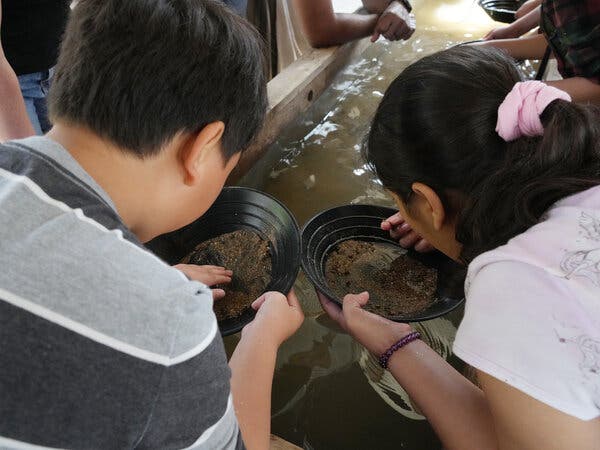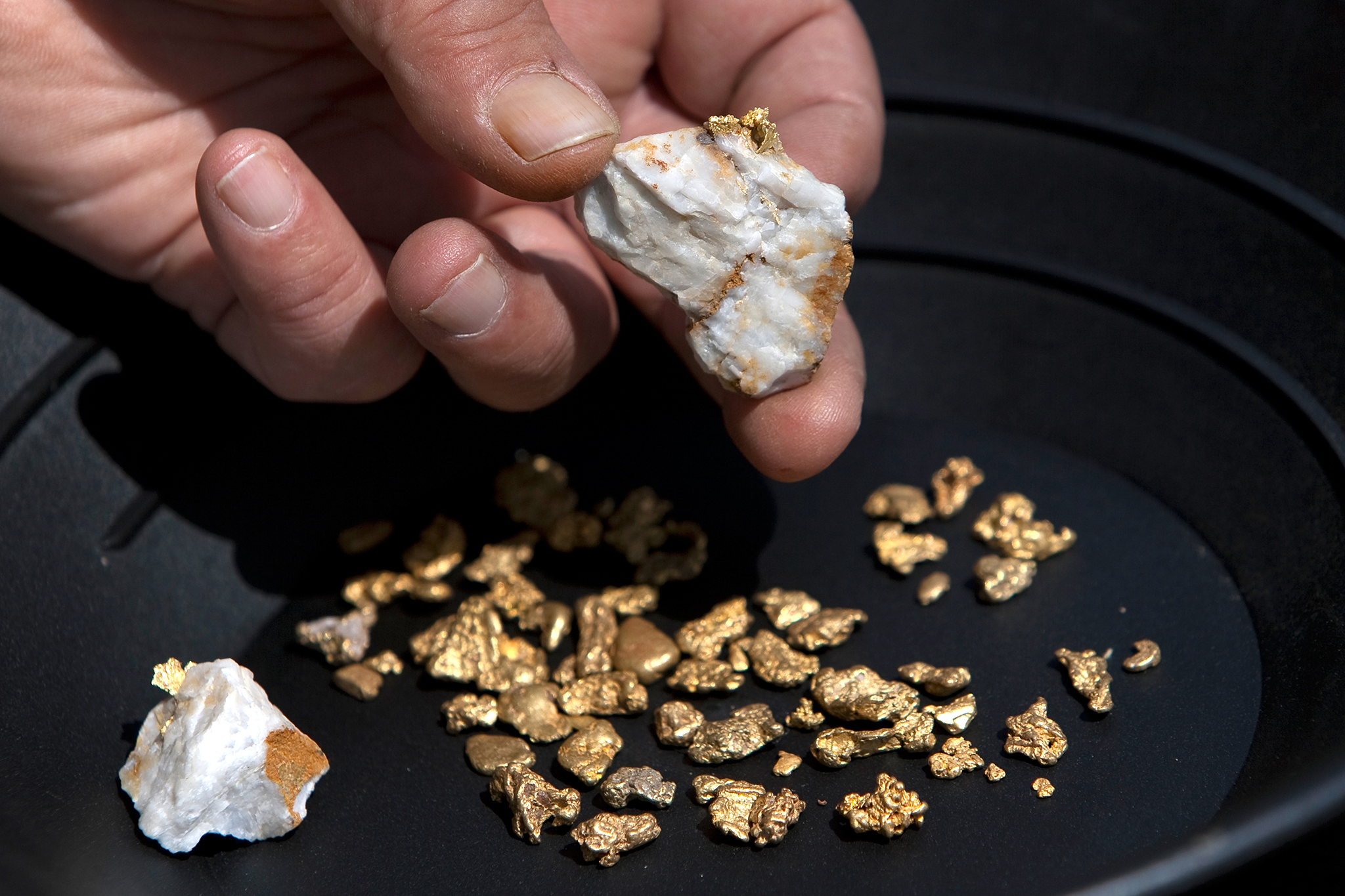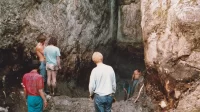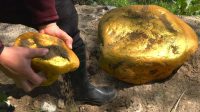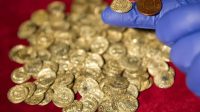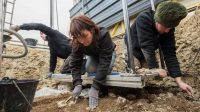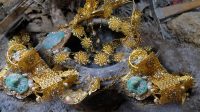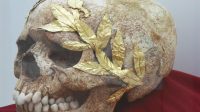That kind of extraction is now heavily restricted in California, yet gold seekers say the recent battering of successive winter storms has produced a similar effect. It is as if Mother Nature had aimed a pressure washer onto the hills and delivered some of the precious minerals still embedded in the rock and dirt.
“Anytime you can stand next to a river, and you hear the boulders tumbling, you know the gold is moving, too,” said Jim Eakin, the owner of a local firewood business who tells the story of finding a nugget so big four years ago that he bought a brand-new Ford F-150 pickup truck with cash. Like many of his gold-seeking friends, Mr. Eakin, who often wears a nugget around his neck, is cagey when asked about exactly where he unearthed the chunk of gold that got him the truck.

“Somewhere north of Los Angeles, south of Seattle and west of Denver,” he said.
Mr. Eakin, whose gravelly voice betrays the pack and a half of cigarettes he smokes daily, does not own a computer and has never sent a text message. He revels in the hunt for treasure. He finds coins of all sizes and Gold-Rush-era belt buckles, and he travels to a big gem show in Tucson, Ariz., to sell his nuggets. It is a hobby that requires a lot of patience: For every big find, there are many days where — to use a gold-mining expression — things don’t pan out.
With the price of gold hovering near highs of $2,000 an ounce, Mr. Eakin counts himself among a group of gold seekers who can “read the ground” and profit from the fortuitous winter weather.
“It’s going to be a magnificent year,” said Tony Watley, president of the Gold Country Treasure Seekers club, which meets at the American Legion hall the third Monday of every month. “Everywhere we are seeing new erosion.”
The Treasure Seekers get-togethers feature a show-and-tell portion where members display their finds on fold-up tables. Those who attended the March meeting were agog when someone laid out two pounds of gold nuggets he had found with a metal detector, the method preferred by most of the club’s members.
“There was $50,000 of gold up at that table,” said Mark Dayton, a regular at the club. “We’ve had more gold in the last two meetings than I’ve seen in the last two years.”
Mr. Dayton, a former police officer and firefighter, now makes a living as a treasure hunter. In just a few outings in April, he found $750 worth of gold pieces. Gold seekers like him predict the best is yet to come, when the river levels recede and the rocks and sandbars become accessible.

There is no shortage of reminders that Placerville, the seat of El Dorado County about an hour east of Sacramento, is gold country. In and around the town there is Gold Country Chiropractic, the Gold Trail School, the Gold Hill Winery, the 49er liquor store, and the Gold Harvest Market on Mother Lode Drive.
Placerville, once a stop along the Pony Express trail and known as Hangtown because of the vigilante justice once meted out there, trades on its Gold Rush history. Mr. Fausel’s store, Placerville Hardware, lays claim to being the oldest continuously operating hardware store west of the Mississippi River. It sells gold panning equipment like sluice boxes, plastic pans with ridges to trap gold, metal detectors and small glass vials to preserve any pickers and flakes that amateur prospectors might find.
For travelers headed to Lake Tahoe, Placerville is not much more than an inconvenient stoplight or two along the main highway. And young people these days seeking fortunes would sooner head to the Silicon Valley than pick up a gold pan.
Today’s gold seekers range from part-time hobbyists keen to spend an afternoon by the river to the die-hard, well-equipped treasure hunters who make a living from it. Gold shops in the area buy the gold and either melt it down or in some cases convert it into jewelry.
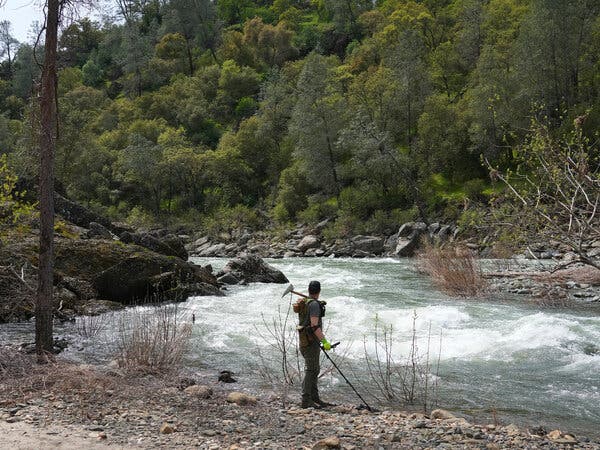
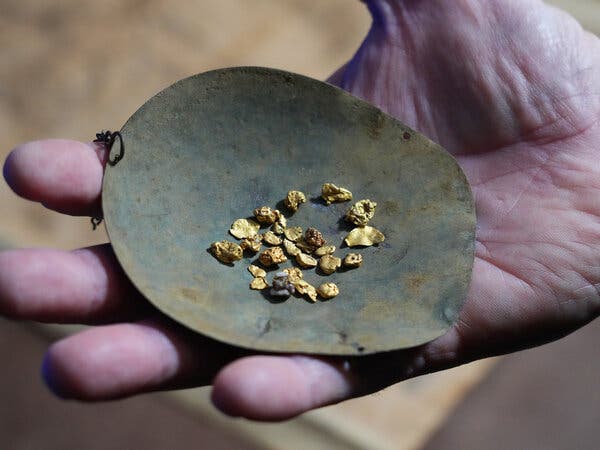

On a recent afternoon, Mr. Dayton was accompanied along the Cosumnes River by a friend, Barron Brandon, a former mining executive and an amateur gold seeker in retirement. The two men hacked away at rocks and sand in a crevice between boulders. One of Mr. Dayton’s metal detectors squawked loudly and, after further digging, they unearthed what had excited the machine: a worthless piece of rebar.
Mr. Brandon showed no sign of disappointment. He stood near the rushing river, the rolling hills covered in white oaks, the pristine creeks flowing gently beside grassy knolls dotted with wildflowers. “The true gold is just being out here,” he said.
James Holifield, a high school student who lives in a Sacramento suburb, came to the banks of the American River on his last day of spring break, inspired by some videos on YouTube. “There’s something about gold,” he said, looking the part in a flannel shirt and rubber boots that covered his shins.
After two hours he had found four flakes of gold. His mother, sitting in a portable chair a few yards back from the river, said she was grateful that her son had chosen a “low-investment” hobby.
And watching him pan for gold, she said, beats seeing him glued to his phone.
